Types of PlantsThere is a wide variety of plants worldwide. Despite the different types, plants have similar functions. Generally, we usually recognize plants that provide flowers and food, and others grow only for taking part in photosynthesis. It doesn't matter if it is just a flowering plant or a non-flowering plant; all kinds of plants are necessary for living. They are an essential part of all aquatic systems and can grow in all types of atmospheric conditions. In this article, we are discussing the different types of plants. The article also outlines the definition and examples of each type. Before we discuss various plant types, let us discuss the term 'Plant'. What is a plant?Plants are defined as multicellular organisms, meaning they are living things. However, they cannot move like humans or other living species. They can grow almost anywhere on the Earth, from snowy mountain slopes to dry and hot deserts. Plants create their foods by taking energy from sunlight, the primary source of energy on Earth. They further provide energy to the ecosystem, making them essential for any ecosystem. Plants use a process called photosynthesis and consume energy from the sunlight to grow and reproduce. They also receive nutrients from the soil. All other organisms in the food chain receive energy from plants by directly consuming them or consuming other organisms that depend on plants. Not all animals can eat all kinds of plants. Plants also produce fruits, vegetables, and grains that help form basic human foods. Besides, they also produce a substantial proportion of the world's molecular oxygen. Therefore, plants are the basis of most of Earth's ecosystems. 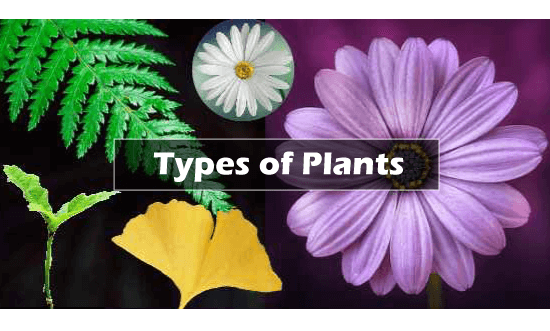
Types of PlantsPlants can be classified based on various factors, such as their roots, heights, fruits, flowers, leaves, branches, genera, species, families, etc. However, they are mainly divided based on the following two major factors:
The above two classifications allow us to identify plant types easily. Let us now discuss each type in detail: Classification of Plants based on Growth HabitsThe simplest classification of plants is possible based on their growth habits, meaning how the plant's growth and development happen. This usually involves plant's shapes, heights, and the specific process of growth they undergo. Multiple factors take part in a plant's growth habit, and therefore, they have different heights, thicknesses, structures, etc. Based on growth habits, plants are mainly divided into the following types: HerbsHerbs are types of plants that are small in size. They have soft, green, delicate stems but no wood tissue. They may or may not have branches. The herb is known to complete its life cycle in one or two seasons. These plants generally do not have strong roots, and therefore, they can be easily uprooted. Besides, herbs have substantial nutritional benefits, making them part of a healthy balanced diet. Bananas, tomatoes, paddy, and wheat are some examples of herbs that contain significant amounts of vitamins and minerals. 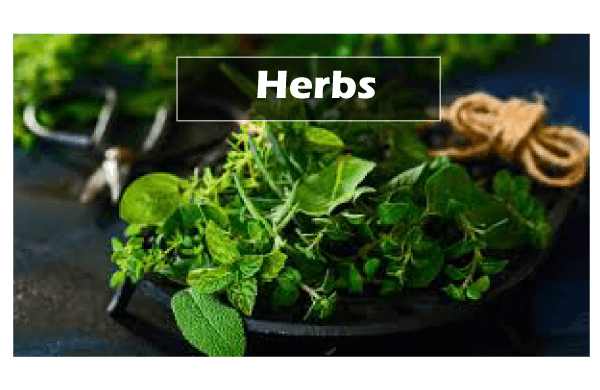
ShrubsShrubs are relatively large compared to herbs. They are medium-sized plants and have many branches. The height of the shrubs can vary from 6m to 10m. Other features include woody stems that are bushy and hardy. However, the stems are not so tough; they are flexible. The life span of the shrubs depends solely on the species concerned. Most shrubs benefit from occasional trim because trimming helps them develop new and fresh branches. However, it is recommended to always wait for trimming until the shrub has finished flowering for the season. Rose, basil, jasmine, and henna are some of the most commonly found shrubs. 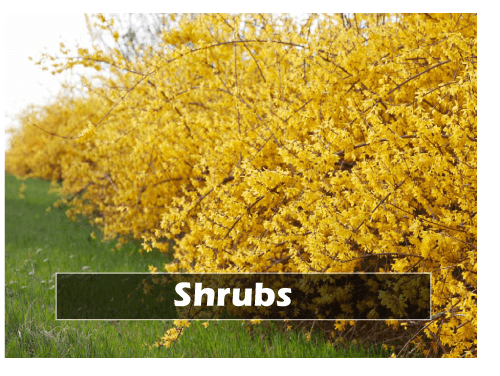
TreesTrees are plant types that are tall and can cover a fairly large area. Once they are fully grown, they are much larger than herbs and shrubs. Even the tree is the largest type of plant. The trees include hard, woody, thick stems, known as trunks. The trunk usually produces many branches that help the leaves, fruits, and flowers to grow. But this is not always the case. Some trees do not include branches; they usually have leaves, flowers, and fruits on their main stem or trunk. The coconut tree is one such plant. The trees' life span is comparatively long, which means that they can grow for many years. Mango, neem, banyan, oak, teak, and cashew are examples of commonly found trees. 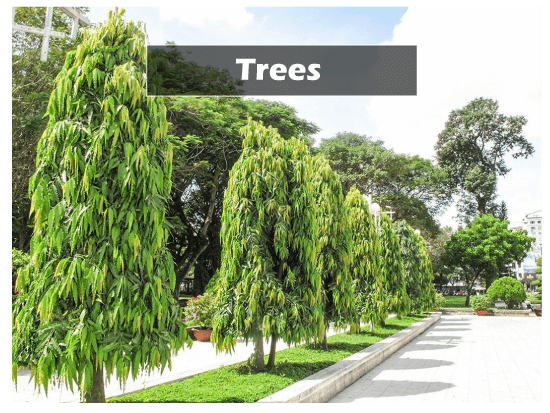
CreepersAs the name suggests, creepers are plants that are known for their creep characteristics. This means that they usually grow by crawling on the surface of the ground. They include thin, long, and very delicate stems. Stems in creepers do not even help them stand. Therefore, these plants continue to grow on the ground. Most creepers plant fruit on the surface. Pumpkin, watermelon, strawberry, and sweet potato are some examples of creepers. 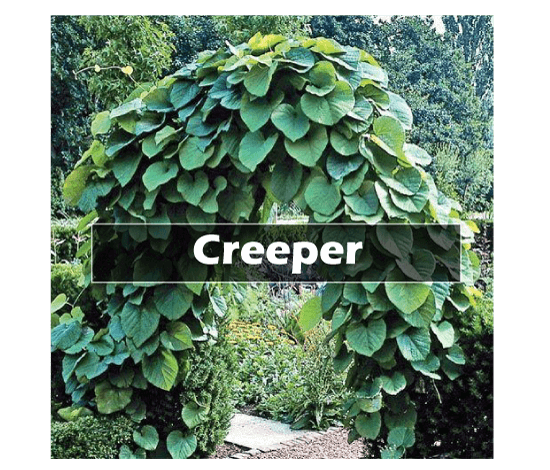
ClimbersClimbers are almost similar to creepers. However, they have one major advantage. Although climbers have thin, weak stems as compared to creepers, they have additional support. The additional support mainly helps them grow vertically with some surrounding elements such as walls, trees, etc. This allows them to carry their particular weight, including fruits. Climbers usually have a unique part called tendrils that help them climb. Some popular climbers are money plants, green peas, sweet gourd, grapes, runner beans, pea plant, etc. 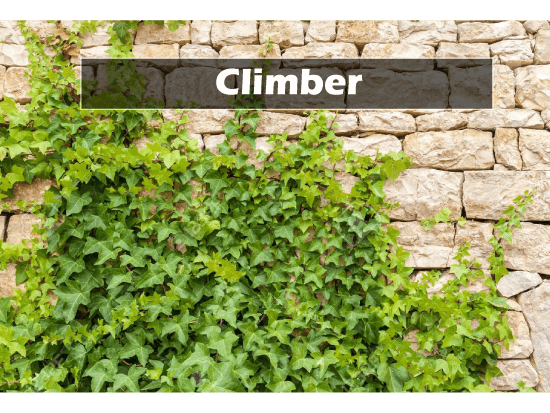
Classification of Plants based on SeedsBased on seeds, plants are mainly classified into two groups such as:
Plants with SeedsThis category of plants includes all types of flowering plants, ginkgo, conifers (cedars, firs, junipers, pines, spruce, etc.), and cycads (palm-like plants consisting of cones). All these plants have seeds either encased inside the cones or in fruits. The flowering plants typically produce seeds inside the fruits. This includes both soft fruits (such as apples, berries, oranges, etc.) and hard fruits (all kinds of nuts). All such species of plants that contain seeds are known as vascular plants. Besides, all seed-bearing plants that have flowers are termed angiosperms, while gymnosperms are cone-producing trees. The seed-bearing plants are one of the largest groups of land-plants in the world. There are about 320,000 plant species on Earth, and about 270-290 of them contain seeds. Let's take a look at the four major groups of plants that reproduce with seeds: Flowering PlantsFlowering plants are some of the most beautiful types of plants. Flowering plants can include a small rose plant to the tall oak tree. These are kinds of plants characterized as angiosperms because they produce seeds in flowers that further take part in the reproductive system. This means that the seeds in flowering plants act as plants' reproductive organs. Since flowering plants have a complex system that usually helps to transport fluids to all parts of the plants, they are also called vascular plants. Furthermore, these plants can also be sub-divided as annuals or perennials based on their surviving capability in the winter season. Some flowers bloom only in spring, while others start flowering in spring and continue to bloom until fall. The following are some most common types of flowering plants: 1. Flowering Annual Plants: The annual plants are the type of plants that usually die in the winter season and release their dormant seed. Some most popular annual plants that produce flowers are petunias, poppies, snapdragons, pansies, winter violas, marigolds, etc. 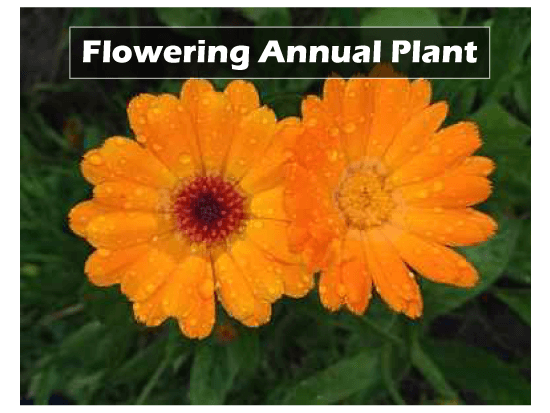
2. Flowering Perennial Plants: Perennial plants are known to produce flowers every year for a specific period. There is no need to replant these types of plants very often. The actual life span of perennials mainly varies from plant to plant. Some flowering plants are also termed tender perennials because they typically grow as annuals in the cold atmosphere. Some most popular perennial plants that produce flowers years after years are roses, dahlias, succulents, hibiscus, lilac shrubs, tulips, daffodils, etc. 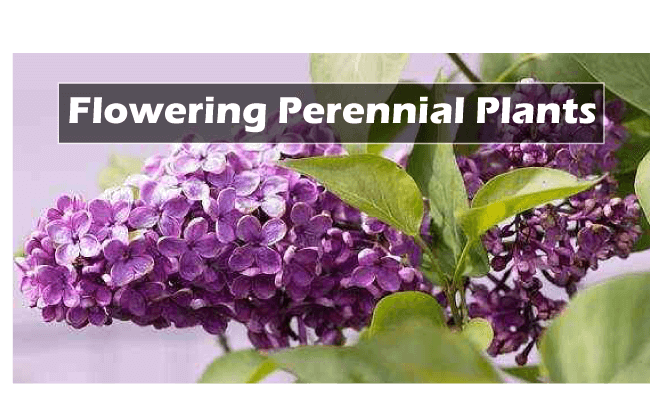
3. Exotic-looking Orchids: These plants are some of those beautiful plants that can grow indoors. They are available in several varieties, and each one has different colors. The most common and easy to care example of exotic-looking orchid include Phalaenopsis orchids. They have large colorful petals with random markings. 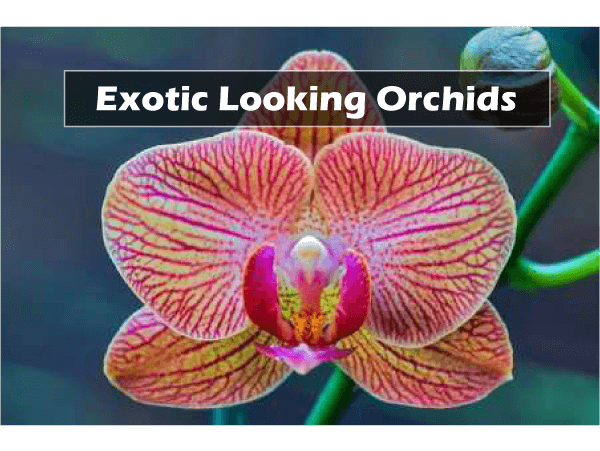
4. Ivy and flowering vines: Ivy is a land plant and can grow well indoors and outdoors. Ivy consists of seeds and is characterized as an angiosperm. In particular, ivy (also called Hedera) is a fast-growing plant with trailing features. This means it can climb walls and trellises. This green leafy plant is mostly used in hanging baskets. As the plant is a member of flowering plants, it typically produces blossoms each year. There can be different species of ivy. 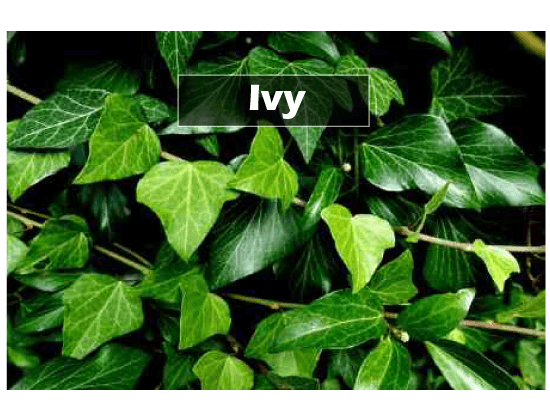
5. Ornamental Grasses: There is a wide range of ornamental grasses with different heights and colors. These are mainly used for preservation around the garden with beautification. The main advantage of these plants is that they are versatile and can easily grow with little maintenance. They also have a seed-bearing characteristic that helps them to reproduce. The height of ornamental grasses can vary from a few centimeters to a few meters. 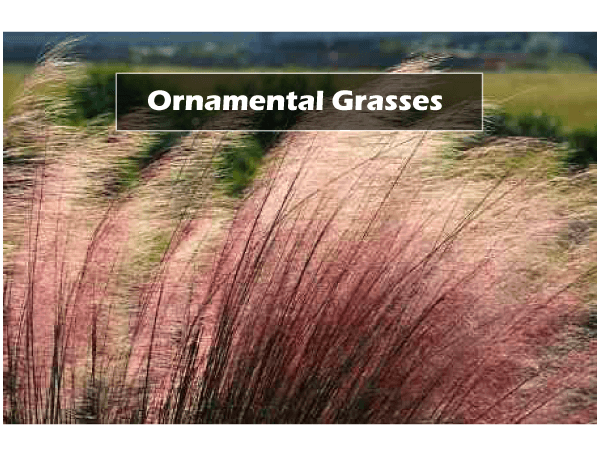
GinkgoGinkgo is a type of tree plant, and it produces seeds. It is the only plant classified in the division Ginkgophyta. All other related species of ginkgo have gone extinct long ago. Therefore, ginkgo is considered a unique type of plant and is completely different from all other plant species. It has unique leaves with a fan-shaped structure and a shape between 2 to 4 inches (5 - 10 cm). Furthermore, it produces fruits that do not contain seeds but are similar to fruits, called false fruits. The Ginkgo Biloba tree is native to China and has many uses in traditional medicine. 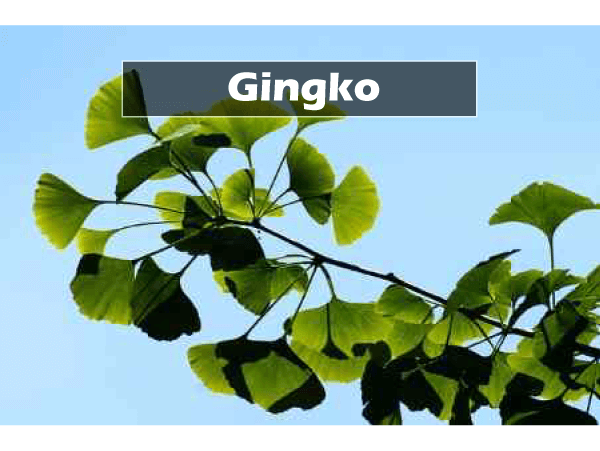
ConifersConifers are mostly woody, shrub-life plants and trees that are categorized in the division Pinophyta. They usually grow in most climates worldwide; however, they are most commonly found in Northern Hemisphere. Conifers are plants that can be as long as large majestic trees or as small as they can grow inside the home in ornamental gardens. Most large conifers consist of drooping leaves covered within soft pine needles, while small conifers species are shrub-like evergreen plants. Generally, conifers are distinguished by their seed-producing cones. Additionally, they are also identified with their unique bluish-gray, green, or silvery foliage. They are best known for their surviving capability in very cold regions. Some species of conifers can survive in about -13 °F (-25 °C) and lower temperatures. Some most popular conifers are pines, cedars, junipers, spruce, etc. 
CycadsCycads are defined as exotic plants and mainly grow in tropical and subtropical regions of the world. These plants have commonly woody trunks which produce large evergreen leaves. Since leaves directly form from trunks, cycads do not have branches. These are plants with seeds, and seeds are produced inside the cone-line structures. They tend to reproduce using beetles that help pollinate the seeds. Cycads are known to grow in warm climates. There are significant amounts of varieties of cycads, and they are found in different sizes. The smallest type of cycads can have a tiny trunk, usually in few centimeters. This type of trunks in cycads are so small that the leaves seem to have grown directly from the ground. This eventually makes it difficult to distinguish these plant species from ferns. Besides, cycads can grow long and reach up to about 32-50 feet. 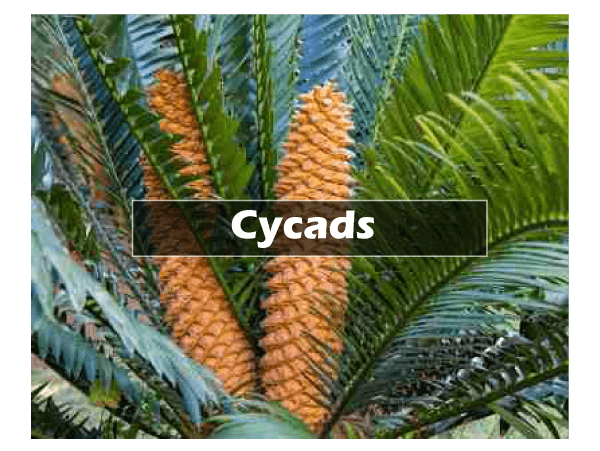
Plants without SeedsThis category of plants includes all kinds of algae, liverworts, mosses, and ferns. They do not have seeds. Instead, they produce spores, which typically are distributed by the wind. The spores further help grow or reproduce new tiny plants, called gametophytes. Let's take a look at the four major groups of plants that reproduce without seeds: AlgaeAlgae are plants that most commonly grow in water bodies. There is a diverse range of seedless plants that are parts of algae. However, they all are typically categorized into brown algae, green algae, and red algae. Since algae consist of diverse species of plants, the categorized groups do not relate with one another. Algae can be small microscopic organisms that could be consumed as food by various marine animals. Besides, they can be seaweed, usually developed in water bodies around coastlines. There are about 72,500 algae found worldwide. 
Although algae are characterized as plants, there is some confusion regarding it. Some species of algae are believed to have the ability to eat other organisms, similar to the animals. However, all algae use photosynthesis to make food. That is why they are mostly grouped as plant types.
LiverwortsLiverworts are known as nonvascular plants that have no flowers and do not contain seeds. They are small leafy plants and generally have a size between 2 mm to 20 mm wide. These are plants known to flourish in damp areas. Liverworts include many species of plants, and small species sometimes become very hard to differentiate from mosses. One effective way to differentiate liverworts is that they typically have tiny hair-like structures called rhizoids. This mainly helps them absorb a significant amount of water. Besides, it is believed that the liverworts developed after algae. Since these plants have lower structure, and so they are considered more advanced than algae plants. Liverworts are categorized in the division Marchantiophyta. 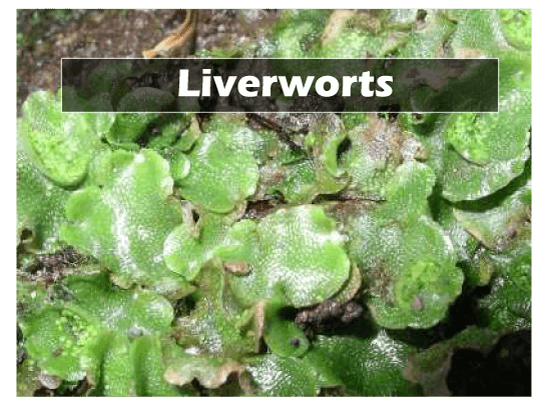
MossesLike liverworts, mosses (also called moss in short) are plants that also grow mainly in damp places. They are unique types of plants that do not necessarily require soil. This means they can also grow without the presence of soil. Mosses often grow on rocks, trees, and even on concrete. There are around 12,000 species of moss, and all such species are categorized in the division Bryophyta. 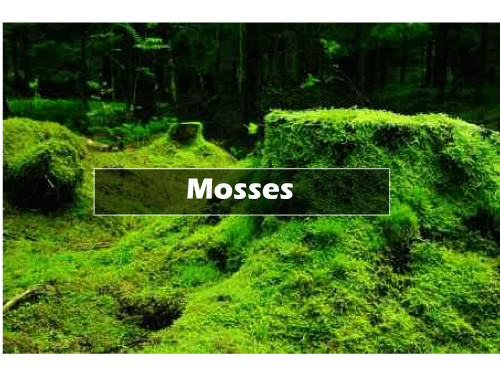
FernsFerns are another group of plants that do not contain seeds. These are also flowerless and are categorized in the division Polypodiopsida. Unlike algae and mosses, ferns are vascular plants and distribute spores. This eventually helps them reproduce. There are about 10,500 species of ferns. Few of them are believed to be the oldest types of plants on Earth. Ferns are typically distinguished by their green leafy foliage, which also contains pinnae and fronds. Most of the ferns generally grow in damp shady places. Besides, they can grow up to 82 feet (25 m) tall under suitable conditions. 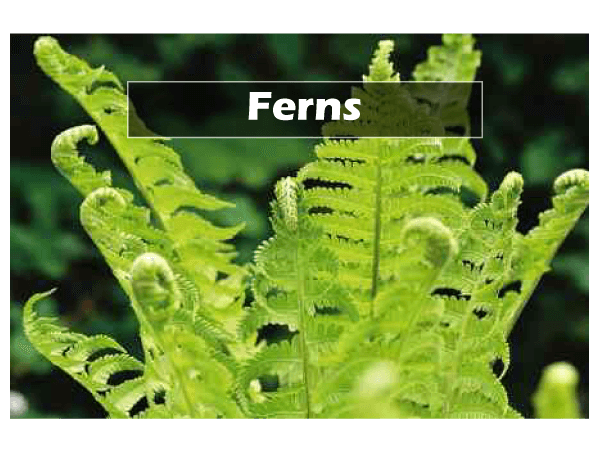
Next TopicBridge Rectifier
|
 For Videos Join Our Youtube Channel: Join Now
For Videos Join Our Youtube Channel: Join Now
Feedback
- Send your Feedback to [email protected]
Help Others, Please Share









